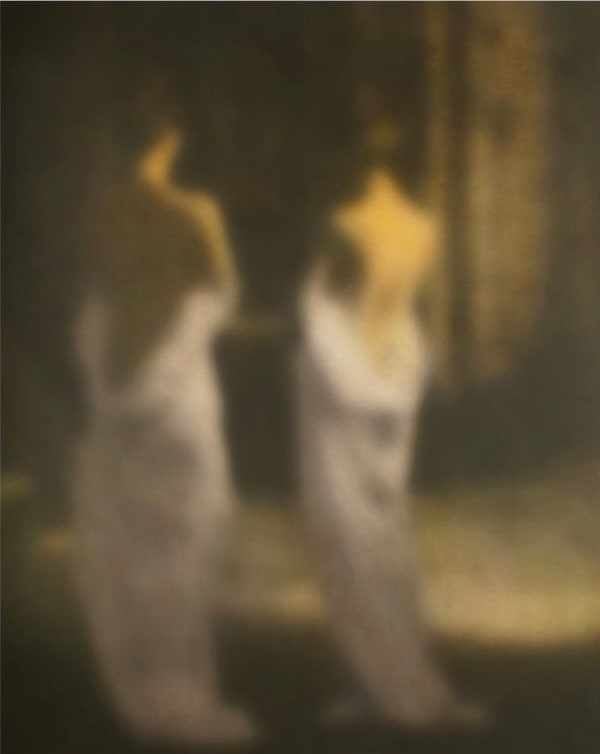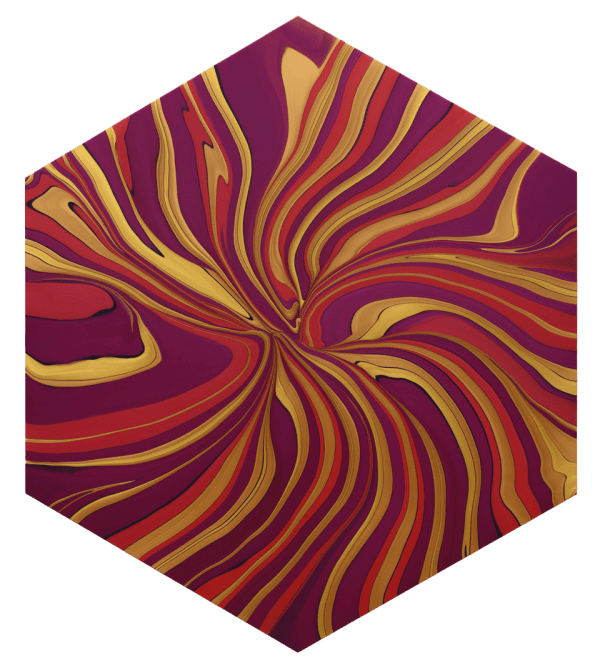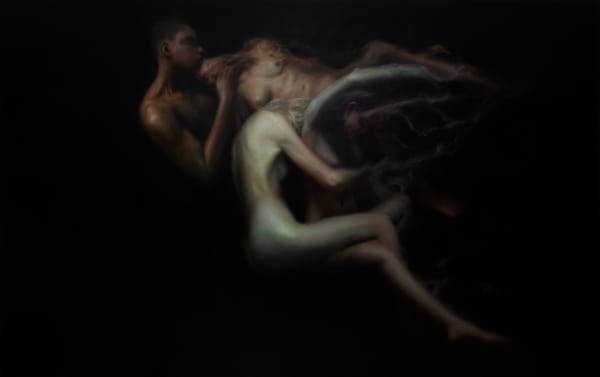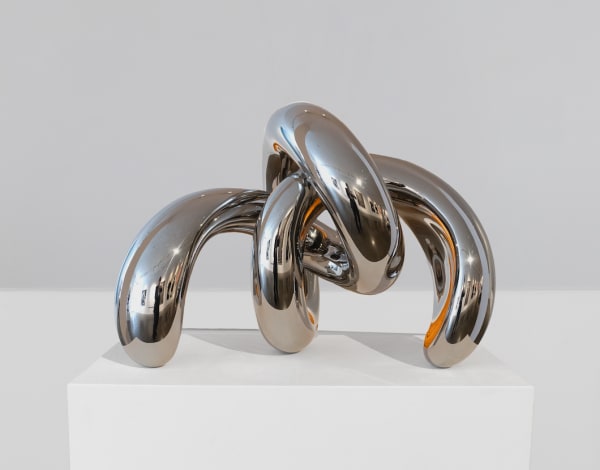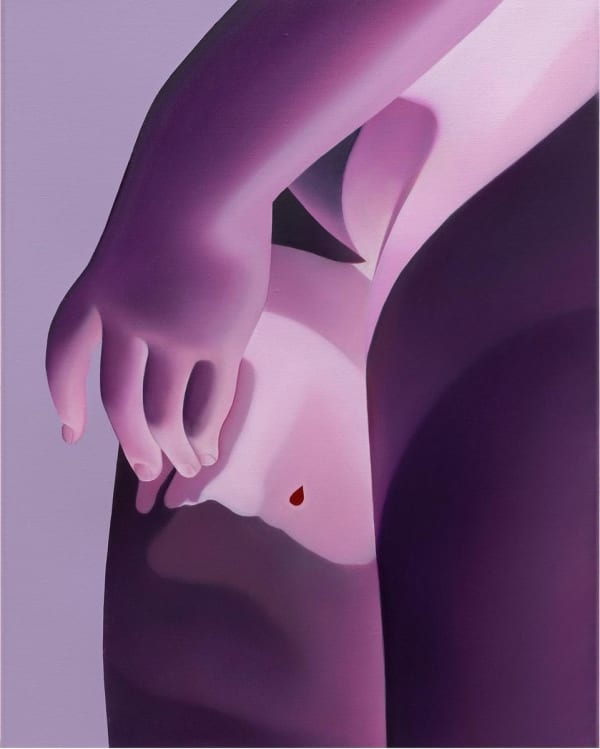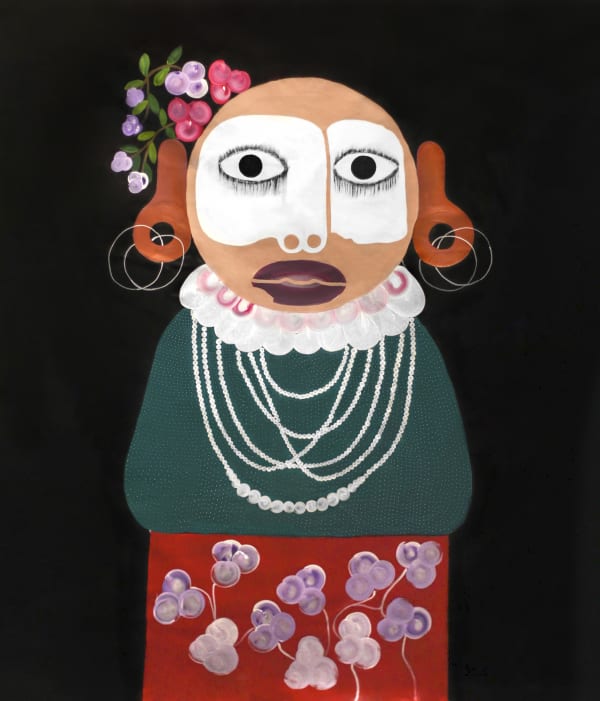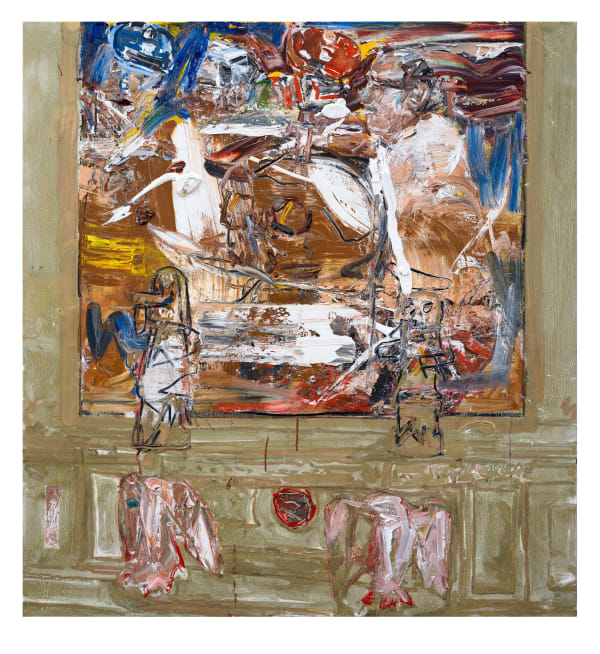-
-
JD Malat Gallery London is thrilled to present its Summer Group Exhibition which brings together 33 works by 18 international artists. In tandem, these works all present different textures, from physical impasto, to reflective effects of light, and metaphorical hidden surfaces.The Summer Group Exhibition emphasises JD Malat Gallery's diverse range of artists, styles, mediums, and perspectives, spotlighting the bold contributions that contemporary artists are making to today’s visual culture. The Exhibition invites viewers to engage with the multifaceted concept of texture, encouraging a greater appreciation for the intricate layers of meaning and materiality in each piece, fostering a rich dialogue between artist, artwork, and observer.
-
-
 Masayoshi Nojo, Mirage#48, 2019
Masayoshi Nojo, Mirage#48, 2019 -
 Masayoshi Nojo, Mirage #38, 2019
Masayoshi Nojo, Mirage #38, 2019 -
 Phoebe Leech, Esprit Déteint, 2025
Phoebe Leech, Esprit Déteint, 2025 -
 Nikolai Makarov, Two Graces, 2016 Sold
Nikolai Makarov, Two Graces, 2016 Sold -
 Ed Moses, Red over Black, 2012
Ed Moses, Red over Black, 2012 -
 Andy Moses, Geodynamics 1704, 2020
Andy Moses, Geodynamics 1704, 2020 -
 Andy Moses, Geomorphology 1108, 2025
Andy Moses, Geomorphology 1108, 2025 -
 Andy Moses, Geomorphology 1705, 2018
Andy Moses, Geomorphology 1705, 2018 -
 Francesca Leone, Arch. 524, 2025
Francesca Leone, Arch. 524, 2025 -
 Casper Brindle, Light Glyph 6, 2021
Casper Brindle, Light Glyph 6, 2021 -
 Conrad Jon Godly, RENAISSANCE#24, 2024
Conrad Jon Godly, RENAISSANCE#24, 2024 -
 Conrad Jon Godly, RENAISSANCE#21, 2024 Sold
Conrad Jon Godly, RENAISSANCE#21, 2024 Sold -
 William Martyr, We Are Never Far Away, 2025
William Martyr, We Are Never Far Away, 2025 -
 William Martyr, Let's go Swimming, 2025
William Martyr, Let's go Swimming, 2025 -
 Henrik Uldalen, Swept, 2022
Henrik Uldalen, Swept, 2022 -
 Henrik Uldalen, Untitled, 2019
Henrik Uldalen, Untitled, 2019 -
 Darren Reid, Highlands, 2022
Darren Reid, Highlands, 2022 -
 Darren Reid, Headland, 2025
Darren Reid, Headland, 2025 -
 Katrin Fridriks, Cosmic Tree of Life, 2021
Katrin Fridriks, Cosmic Tree of Life, 2021 -
 Santiago Parra, Untitled, 2023
Santiago Parra, Untitled, 2023 -
 Richard Hudson, Twisted, 2020
Richard Hudson, Twisted, 2020 -
 Richard Hudson, Crab, 2020
Richard Hudson, Crab, 2020 -
 Richard Hudson, Unravel, 2020
Richard Hudson, Unravel, 2020 -
 Vivian Greven, DroO II, 2020 Sold
Vivian Greven, DroO II, 2020 Sold -
 Kojo Marfo, Stranger #12, 2022
Kojo Marfo, Stranger #12, 2022 -
 Ur Kasin, The Muse, 2025
Ur Kasin, The Muse, 2025 -
 Luis Olaso, Composition for a ceramic jug with a bouquet of flowers, 2023
Luis Olaso, Composition for a ceramic jug with a bouquet of flowers, 2023 -
 Santiago Parra, Untitled, 2023
Santiago Parra, Untitled, 2023 -
 John Copeland, REMEMBER THESE MOMENTS, 2024
John Copeland, REMEMBER THESE MOMENTS, 2024 -
 John Copeland, WALLS OF GLASS, WORDS AT LAST, 2024
John Copeland, WALLS OF GLASS, WORDS AT LAST, 2024 -
 Anne-Sophie Øgaard, White Conjunction 0356, 2025
Anne-Sophie Øgaard, White Conjunction 0356, 2025
-
-
 Phoebe Leech, Esprit Déteint, 2025, Oil on linen, 84 1/4 x 63 in, 214 x 160 cm
Phoebe Leech, Esprit Déteint, 2025, Oil on linen, 84 1/4 x 63 in, 214 x 160 cm -
 Nikolai Makarov, Two Graces, 2016, Acrylic on canvas, 63 x 51 1/8 in, 160 x 130 cm
Nikolai Makarov, Two Graces, 2016, Acrylic on canvas, 63 x 51 1/8 in, 160 x 130 cm -
 Ed Moses, Red over Black, 2012, Mixed media on canvas, 60 x 48 in, 152.4 x 121.9 cm
Ed Moses, Red over Black, 2012, Mixed media on canvas, 60 x 48 in, 152.4 x 121.9 cm -
 Andy Moses, Geodynamics 1704, 2020, Acrylic on canvas over hexagonal wood panel, 78 x 67 in, 198.1 x 170.2 cm
Andy Moses, Geodynamics 1704, 2020, Acrylic on canvas over hexagonal wood panel, 78 x 67 in, 198.1 x 170.2 cm -
 Francesca Leone, Arch. 524, 2025, Oil on copper sheet, 35 cm x 45 cm (diameter)
Francesca Leone, Arch. 524, 2025, Oil on copper sheet, 35 cm x 45 cm (diameter) -
 Luis Olaso, Composition for sunflowers and jug, 2023, Oil, acrylic, oil bar and oil pastel on canvas, 78 3/4 x 63 in, 200 x 160 cm
Luis Olaso, Composition for sunflowers and jug, 2023, Oil, acrylic, oil bar and oil pastel on canvas, 78 3/4 x 63 in, 200 x 160 cm -
 Casper Brindle, Light Glyph 6, 2021, Plexiglas, pigmented acrylics, 74 x 44 in, 188 x 112 x 20.5 cm
Casper Brindle, Light Glyph 6, 2021, Plexiglas, pigmented acrylics, 74 x 44 in, 188 x 112 x 20.5 cm -
 Conrad Jon Godly, RENAISSANCE#43 , 2024, Acrylic on canvas, 70 7/8 x 90 1/2 in, 180 x 230 cm
Conrad Jon Godly, RENAISSANCE#43 , 2024, Acrylic on canvas, 70 7/8 x 90 1/2 in, 180 x 230 cm -
 William Martyr, Let's go Swimming, 2025, Acrylic on canvas, 59 in (diameter), 150 cm (diameter)
William Martyr, Let's go Swimming, 2025, Acrylic on canvas, 59 in (diameter), 150 cm (diameter) -

-
 Santiago Parra, Untitled, 2023, Acrylic on canvas, 66 7/8 x 86 1/4 in, 170 x 219 cmFramed: 68 1/2 x 87 3/4 in, 174 x 223 cm
Santiago Parra, Untitled, 2023, Acrylic on canvas, 66 7/8 x 86 1/4 in, 170 x 219 cmFramed: 68 1/2 x 87 3/4 in, 174 x 223 cm -
 Darren Reid, Headland , 2025, Acrylic on panel, 51 1/8 x 31 1/2 in, 130 x 80 cm
Darren Reid, Headland , 2025, Acrylic on panel, 51 1/8 x 31 1/2 in, 130 x 80 cm -
 Katrin Fridriks, Cosmic Tree of Life, 2021, Acrylics on canvas, 31 1/2 x 31 1/2 x 2 in, 80 x 80 x 5 cm
Katrin Fridriks, Cosmic Tree of Life, 2021, Acrylics on canvas, 31 1/2 x 31 1/2 x 2 in, 80 x 80 x 5 cm -
 Masayoshi Nojo, Untitled, 2019, Cotton on panel, acrylic, silver foil, aluminium foil, 31 1/2 x 23 7/8 in, 80 x 60.5 cm
Masayoshi Nojo, Untitled, 2019, Cotton on panel, acrylic, silver foil, aluminium foil, 31 1/2 x 23 7/8 in, 80 x 60.5 cm -
 Richard Hudson, Crab, 2020, Polished Mirrored Steel, 19 3/4 x 28 3/8 x 19 1/4 in, 50 x 72 x 49 cm
Richard Hudson, Crab, 2020, Polished Mirrored Steel, 19 3/4 x 28 3/8 x 19 1/4 in, 50 x 72 x 49 cm -

-

-

Summer Exhibition: London
Past viewing_room



